What if we told you that the world of dental implants is hiding a secret that could change the very way you think about your smile? We're diving into a story that flips conventional dental wisdom on its head.
Because now, more than ever, understanding the complexities of dental implants is crucial. With recent advancements shaking the very core of dental healthcare, it's imperative to be informed.
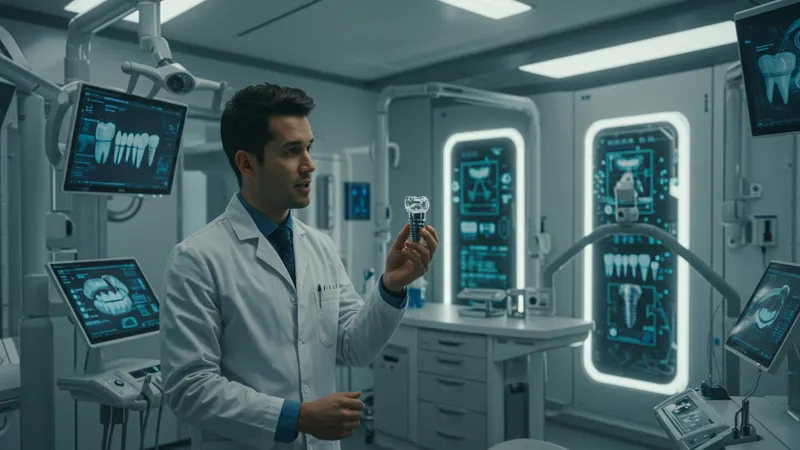
Most people think dental implants are simply about replacing a tooth—but what you don't know could surprise you. Recently, studies have revealed that a staggering 95% of patients have a completely new experience post-surgery. But that’s not even the wildest part…
There’s a reason why some practitioners are pushing back against traditional implant methods. Emerging data indicates new cost-effective approaches are on the rise. Astonishingly, these new methods are not just cheaper, they’re reportedly less painful with faster recovery times. But hold onto your hats, because what happens next shocked even the experts...
Most assume there's only one standard type of dental implant, but they couldn't be more wrong. With the advent of subperiosteal and zygomatic options, the dental field is being rocked by variety. Some implants don’t even require drilling into the jawbone, a stark contrast to conventional beliefs. But there's one more twist that might surprise you...
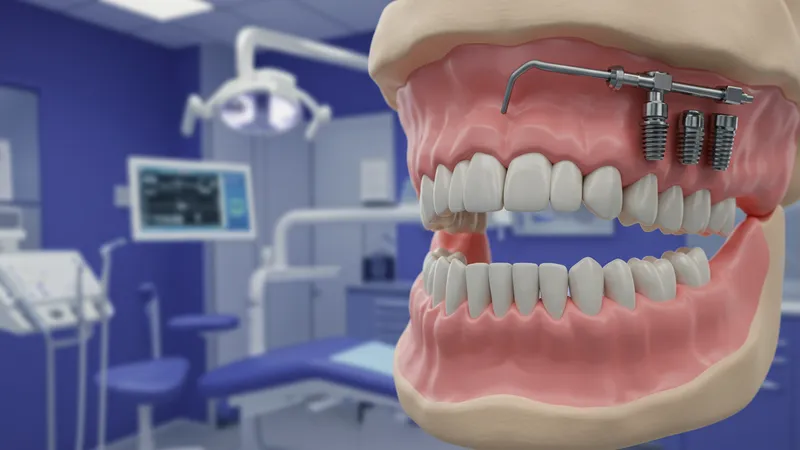
Did you know that subperiosteal implants are now the go-to for patients with bone loss? These sit atop the jawbone instead of being inserted, a revolutionary step in implant technology. Recovery is not only quicker, but patients report higher satisfaction rates post-op. Read on if you think that’s game-changing...
Zygomatic implants—ever heard of them? Positioned in the cheekbone, they’re a maverick move for those with insufficient jawbone density. Their popularity is soaring, but what you read next might change how you see implants forever.
Many believe traditional implants are the best, yet the flexibility new types offer is undeniable. As awareness grows, practitioners are increasingly opting for these innovative alternatives. You won’t want to miss what this means for future treatments.
Just when you think you’ve got a handle on dental implant costs, a new factor emerges. It's shocking how many hidden charges surface post-procedure. Standard implants average around $3000 each, but the true expenses often surpass this with aftercare and compulsory check-ups. Could there be a more cost-effective way?

For those considering budget options, beware! The cheapest offers aren't always the most transparent. Promotional deals sometimes exclude vital components like crown fittings, leading to an unexpected financial burden. Delve deeper to discover how you can protect your wallet.
Insurance coverage is another tangled web. Many plans provide some level of coverage, though the specifics often elude policyholders until it's too late. Knowing the intricacies of dental plans can be your saving grace. The next segment might just save you thousands...
Meanwhile, savvy patients are turning to medical tourism. Some countries offer complete packages at a fraction of domestic prices, combining world-class care with a vacation. But before you book your flight, there’s something critical you need to know.
While many pursue dental implants for a pristine smile, the advantages surpass the merely cosmetic. They’re a boon to oral health, preventing bone loss and maintaining facial structure. These hidden benefits are seldom celebrated, but shouldn’t they be?
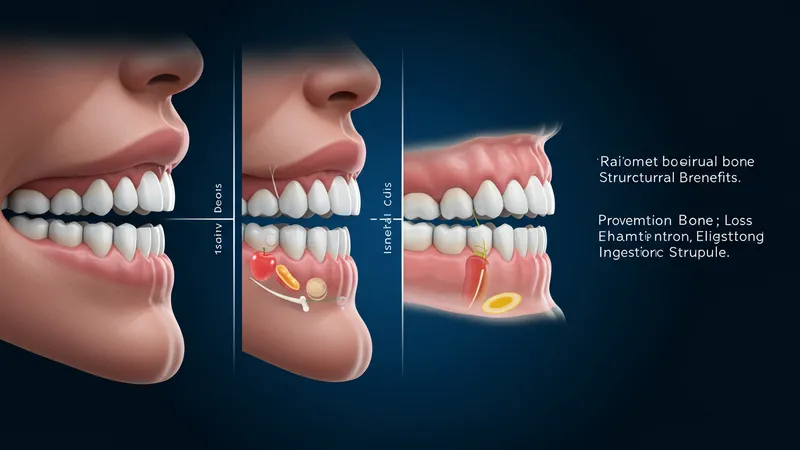
Recent studies reveal an intriguing upside: implants can improve chewing efficiency dramatically, impacting overall nutrition positively. This advantage isn’t just superficial—it affects one’s quality of life immeasurably. Uncover more as we explore these surprising benefits...
There’s even evidence to suggest implants have psychosocial benefits, boosting self-esteem and reducing anxiety linked to social interactions. The confidence gained with a perfect smile is transformational, yet this aspect often goes unnoticed. Continue reading for an unexpected twist on personal well-being.
While aesthetic and health benefits coexist, the deeper, intangible gains often fly under the radar. Embracing this wider narrative is crucial as misconceptions about implants abound. What if the psychological rewards were just as compelling as the physical ones?
If you think dental implant technology hasn’t changed much, think again. From 3D printing to robotic-assisted surgery, the field is teeming with innovations. These advancements are reshaping both the procedure itself and patient outcomes. Have you heard about the latest cutting-edge innovations yet?
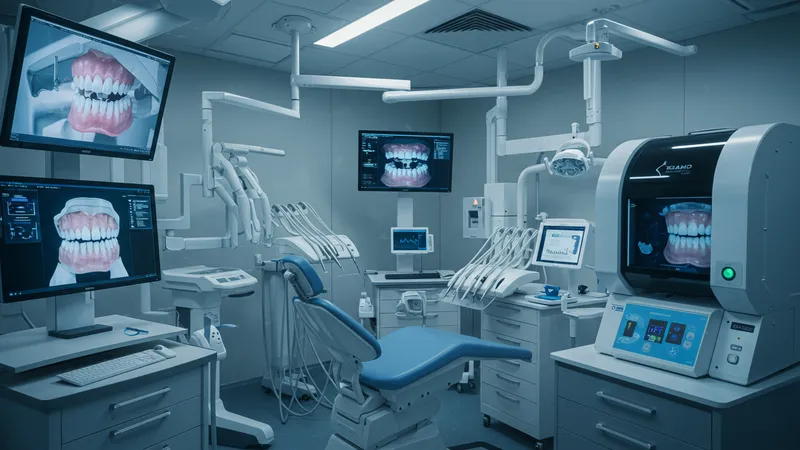
The rise of digital scans has minimized the inaccuracies that used to plague implants. The precision is unprecedented, reducing recovery times and increasing success rates. Such breakthroughs are redefining dental care standards every day. Dive deeper to grasp the full picture...
What about artificial intelligence in dentistry? AI-driven algorithms are now guiding decision-making, predicting complications, and personalizing patient care. The future is here, and it's incredibly promising. But the next revelation might just blow your mind.
Virtual reality used in surgical planning—a concept that feels lifted from science fiction—is becoming a reality. Experience-based simulations are training dental surgeons worldwide as implants become complex yet more accessible. How will this unfold to affect patients and practice alike?
Post-implant recovery is riddled with myths that perpetuate fear. However, the reality is often much milder, given proper care and guidance. There are secrets that make this transition not just manageable, but surprisingly swift. Shall we dispel the rumors?

One underestimated factor is diet. Switching to softer foods initially aids healing, but knowing which nutrients accelerate recovery can be a game-changer. Implementing these dietary adjustments can drastically cut down recuperation time. What if a simple meal plan could hasten your return to normalcy?
Activity levels post-surgery are another surprising aspect. Patients often fear moving too much, yet gentle exercise is shown to boost circulation, speeding up the healing process. Could activity be the secret key you need during recovery?
From knowing the right signs of proper healing to recognizing potential complications, a comprehensive understanding equips patients for challenges. As we navigate these layers of recovery, an unexpected truth emerges that could set your fears to rest.
Finding the right specialist can be overwhelming, but it’s crucial. Credentials and experience vary drastically, and the difference can mean everything. Delving into this selection process reveals unexpected insights.
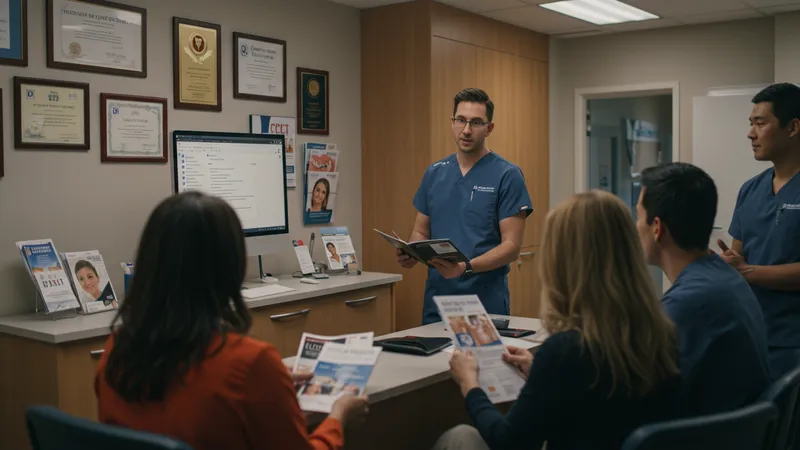
Insights on how to vet specialists—consider checking reviews, accreditation, and treatment philosophy. Establishing trust is paramount, yet some patients neglect this step, leading to regret. Does evaluating a specialist before surgery guarantee a better outcome?
Even the consultation process exposes much about a specialist’s approach. Discussing your specific needs and expectations can spotlight whether their services align. With such stakes in play, the decision shouldn’t be rushed. Who knew consultations were this revealing?
Ultimately, it comes down to the personal rapport you establish. Beyond the technicalities lies empathy and understanding—traits not listed on paper but invaluable in practice. Could your gut feeling actually be the best guide?
It’s astonishing how many myths surround dental implants, leading to unnecessary fears and indecision. Understanding the truth behind these misconceptions is liberating. Shall we debunk some myths together?
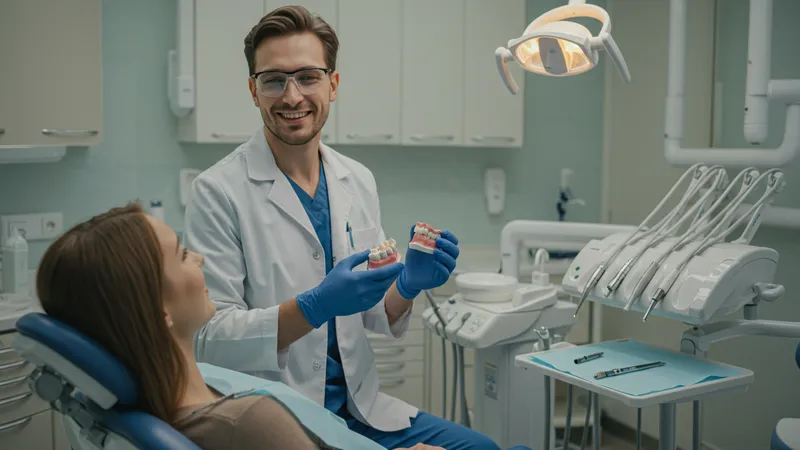
Many think implants are painful to a startling degree, but most surgeries are straightforward with minimal discomfort due to local anesthesia. Understanding this fact alone could alleviate countless patient anxieties. Read on to uncover more inaccuracies...
Another widespread myth is implants being unsuitable for older adults. In reality, age isn’t a barrier; rather, the health of gums and bone matter more. Could dismantling these myths open new opportunities for many?
Contrary to popular belief, maintenance isn't overly demanding. Regular dental hygiene suffices for implants. Trusting hearsay without fact-checking only leads to misinformation. Are you ready to challenge what you thought you knew?
Dental implant success rates soar above 95%, yet most only scratch the surface of what this statistic represents. Delving into the nuances reveals startling insights and unexpected facets of the story. Curious?
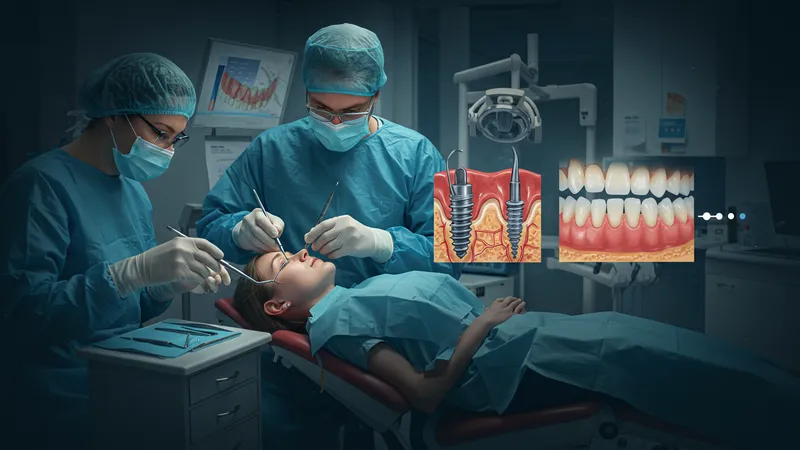
The criteria that ensure success encompass much more than surgical precision—they include patient health, pre and post-care, and even jawbone quality. All are intertwined, illustrating that the success metric is multifaceted. Want to see how they link together?
Even more astonishing is that failure often stems from neglecting simple aftercare—such avoidable missteps reduce the expected longevity of implants. Vigilance in care is more important than many realize. Could this awareness revolutionize patient outcomes?
Statistical results are illuminating but too often, personal tales of success provide the real testimony. These stories are powerful, reshaping preconceived notions about what true success looks like. What if the story they tell is more convincing than you imagined?
It’s easy to skim over potential pitfalls, but knowing what to look for prepares you for success. Some complications, like infections or nerve damage, require immediate attention. Other subtler issues like slight implant shifts can arise over time. Learning to identify these early makes all the difference.
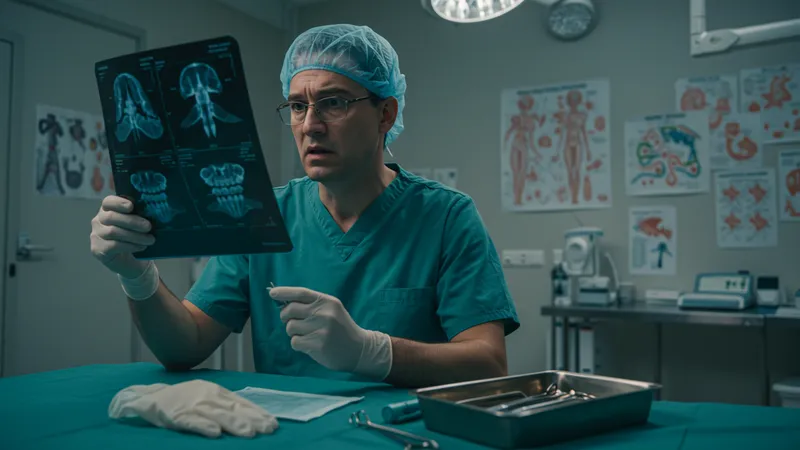
Infections often result from poor hygiene or bad luck, yet prompt action can prevent escalation. This underscores the importance of regular check-ups—a stitch in time saves nine, after all. Discover how awareness is your best defense in the ensuing page...
Nerve damage is rare, but not unheard of. This typically resolves with time, but knowing when to alert your specialist can prevent unnecessary distress. Could foreknowledge alleviate much of the anxiety associated with this possibility?
Other complications are even more innocuous at first pass. From implant loosening to sinus issues, recognizing the signs early can ensure quick remedy and maintain implant integrity. Understanding these nuances empowers patients profoundly.
How do implants impact lifestyle? The ramifications extend far beyond dental health—they transform daily routines and social interactions. The shift is as psychological as it is physical. Are you ready to explore these changes?

Many experience newfound confidence with implants, altering public interactions and self-perception. Testimonials often cite life-changing effects post-surgery. But this transformation doesn’t end with smiles—it permeates broader aspects of life. Could a hidden psychological shift accompany the physical change?
Those involved in active lifestyles will find that implants are surprisingly accommodating. Unlike some dental appliances, they offer stability and peace of mind during activities. Could it be that implants are a true partner in dynamic living?
Socially, the absence of self-consciousness allows for a more open, engaging interaction with others. But the profound change is within—implant wearers often feel they’ve regained a piece of themselves. What’s more therapeutic than that?
Conventional wisdom says age matters little in implant candidacy, but delving into this topic reveals surprising truths. Older adults, often overlooked, can benefit hugely from implants. Why does age still cast doubt?
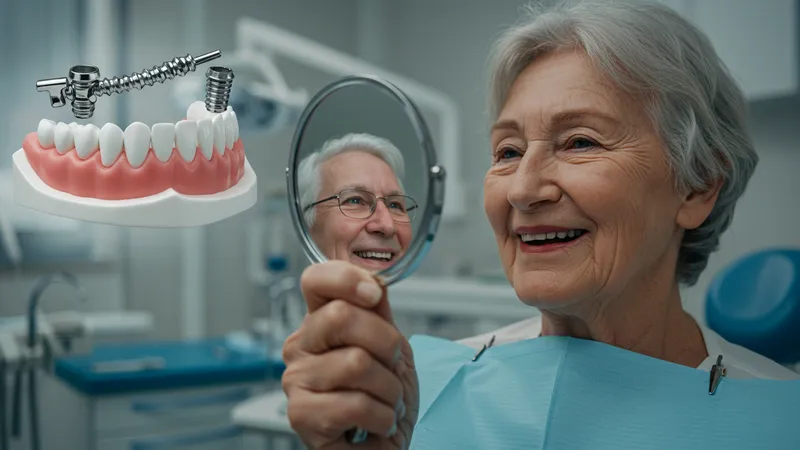
The truth is, age does not diminish the advantages of implants, as older bones still accept titanium well. As long as gum health is maintained, success rates for older adults are comparable to younger ones. Could this provide a new lease on life for many seniors?
Beyond functionality, implants address concerns specific to older adults, such as maintaining facial structure and assisting with better chewing. These aspects redeem quality of life, proving the value for an older demographic. Why should age be a limiting factor at all?
Older adults might initially hesitate, but positive outcomes and enhanced living experiences challenge their reservations. This shift challenges stereotypes and expands implant horizons. Could embracing age redefine expectations?
It’s a classic debate—implants vs. dentures—but possibly not one-sided as presumed. Examining them reveals distinct advantages and pitfalls inherent to each. What if the solution isn’t as clear-cut?
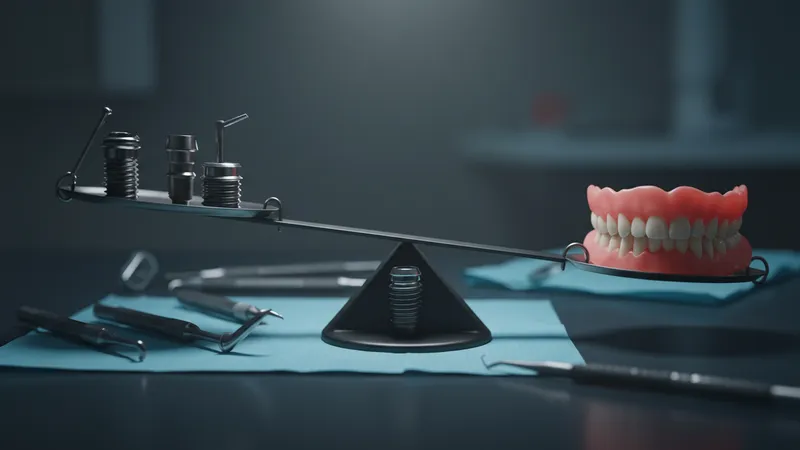
Dentures are often favored for their simplicity and cost-effectiveness, yet implants offer unmatched permanence and natural aesthetics. Balancing these factors makes the decision charged with complexity. What if there’s more to the choice than meets the eye?
Another common misconception is maintenance; dentures necessitate specific care routines, whereas implants integrate seamlessly into an oral hygiene regime. Understanding these contrasts is crucial for an informed choice. Ready to peel back layers of perception?
Ultimately, suitability varies based on personal and health considerations. Both options bring their unique considerations to the table, demanding careful deliberation. How could redefining measures of value affect your perception of the ‘right’ choice?
Dental implant demand is surging worldwide, spurred by an aging population and growing middle class eager for advanced care. Each geography tells a distinct story—are you interested in this dynamic evolution?

In emerging markets, implants signify prestige and access to care previously beyond reach, broadening access and increasing affordability. This mirrors a societal shift as yet untapped potential expands. Could these changes redefine healthcare globally?
Developed countries witness demand driven by aging. The societal focus on longevity emphasizes function and appearance alike, driving technological advancements. Such cultural perceptions drive industry shifts. Where does this leave the future of dentistry?
The evolving demographic landscape continues reshaping needs and solutions. Providers are rapidly adapting to meet diverse expectations. How these trends inform innovation and care delivery is an unfolding narrative of epic proportions.
The future promises bountiful innovations, driven by technology and patient-centered care. New materials are under development, offering superior compatibility and durability. Are you prepared to imagine what’s on the horizon?
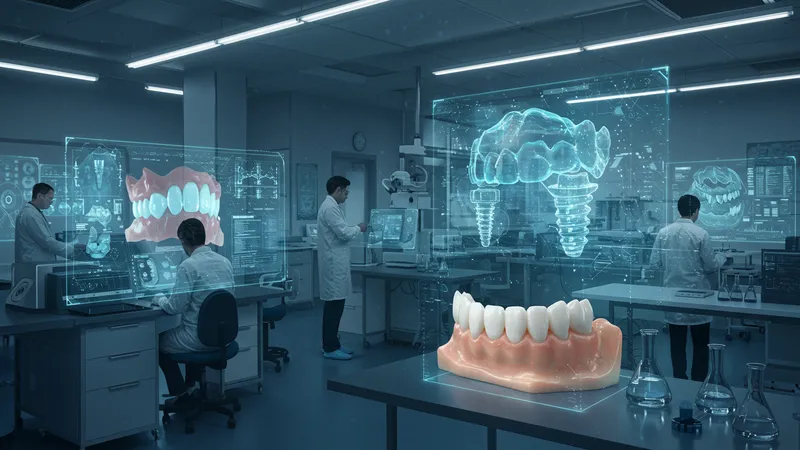
Research into bio-integrative implants could bring a future where implants even mimic real bone behavior, aligning perfectly with the jawline. Technological marvels like these are redefining not just what’s possible, but expected. Do such advances excite your curiosity?
Additionally, eco-consciousness prompts the development of sustainable options, an intriguing blend of ethics and sciences. This challenges the field to meld social responsibility with advanced solutions. How could this shape your perceptions of future healthcare?
The implant industry stands poised on the cusp of next-generation breakthroughs, steering us towards a promising future. It demands we embrace these changes eagerly to maximize their benefits. What do you think awaits us just beyond the present horizon?
As we’ve unraveled the intricacies of dental implants, the revelations are nothing short of transformative. A glance beneath the surface reveals rich layers of innovation, patient experiences, and future breakthroughs. The takeaway is clear: dental implants are, without doubt, the frontier of oral healthcare advancement.
Share this article, bookmark it, and be part of a conversation that could redefine how we approach dental health forever. The journey into the world of dental implants is just beginning—will you stand by and watch, or dive deeper with us?